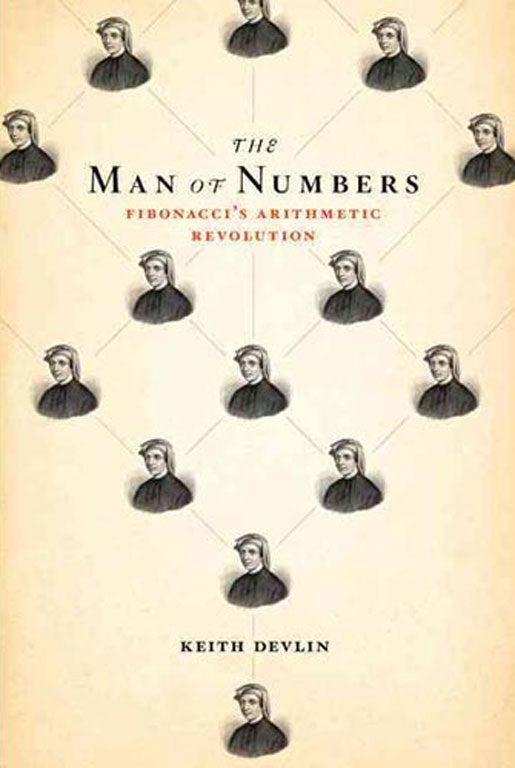The Man of Numbers: Fibonacci's Arithmetic Revolution, By Keith Devlin

Fibonacci Numbers are increasingly fashionable. Architects weave them into their buildings, and they figure heavily in books on the rapidly developing science of form in nature.
But like so much else – kilts-and-reels Scottishness, Valentine's Day – Fibonacci Numbers turn out to be something of a Victorian invention. According to Keith Devlin, the term was first uttered in 1870.
Until then this book's protagonist was known as Leonardo of Pisa (c.1170-c.1250) and his fame was initially for something of greater import than the magic numbers. This Leonardo, in the Liber Abacci (1202), brought Hindu-Arabic maths to Europe: the number system we use, from 0 to infinity via the powers of 10.
The cumbersome Roman number system made multiplication and division almost impossible. Algebra was, of course, also an Arabic invention, and that is the meat of Fibonacci's Liber Abacci (I think we shall keep calling him that). Just as we take the concept of zero for granted, algebra also become relatively easy with hindsight. Fibonacci's equations did not yet have the familiar xs and ys: instead, the unknown was called "the thing".
The Fibonacci Numbers comprise a series in which every term is derived from the preceding two added together, hence 0, 1, 1, 2, 3, 5, 8, 13, 21, 34, 55, 89 etc. The series, not discovered by Fibonacci but popularised by him, was originally a puzzle in which pairs of rabbits breed every month, and none die – how many rabbits will there be after a year?
A mathematical curiosity then? No, because many natural forms exhibit Fibonacci Numbers, especially flowers and fruits such as sunflower seed heads. Counting the number of left and right spirals in sunflower heads always reveals Fibonacci Numbers: typically 55 and 89.
The role Fibonacci Numbers play in the shaping of plants is the subject of much research, but Devlin's purpose is to give a more rounded picture of Fibonacci. It's no accident that the new mathematics entered Europe through 13th-century Italy. Trade was burgeoning and with it the need to manage transactions. The Man of Numbers is a valuable addition to the growing knowledge of our own hidden back-story: the crucial innovations that made us modern.
Order for £17.09 (free p&p) from the Independent Bookshop: 08430 600 030
Subscribe to Independent Premium to bookmark this article
Want to bookmark your favourite articles and stories to read or reference later? Start your Independent Premium subscription today.

Join our commenting forum
Join thought-provoking conversations, follow other Independent readers and see their replies